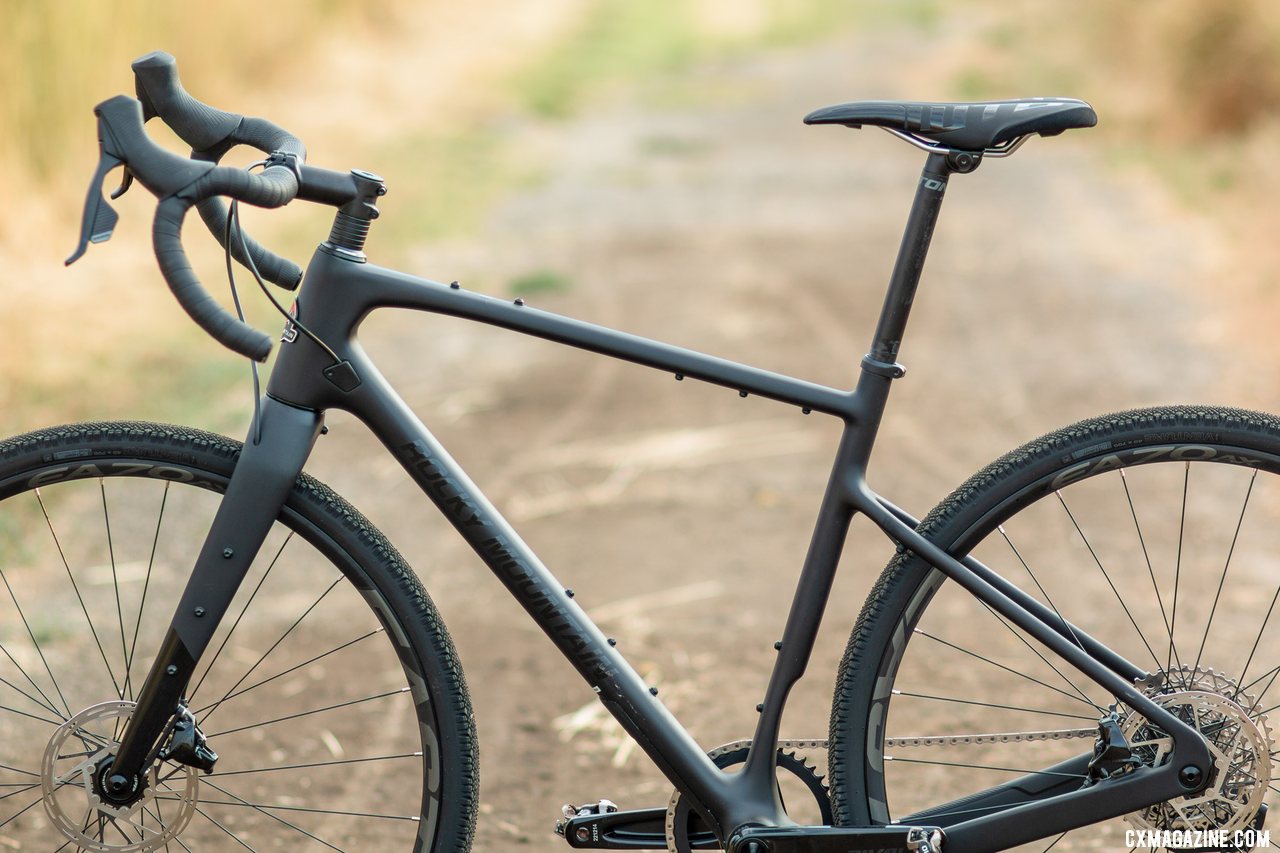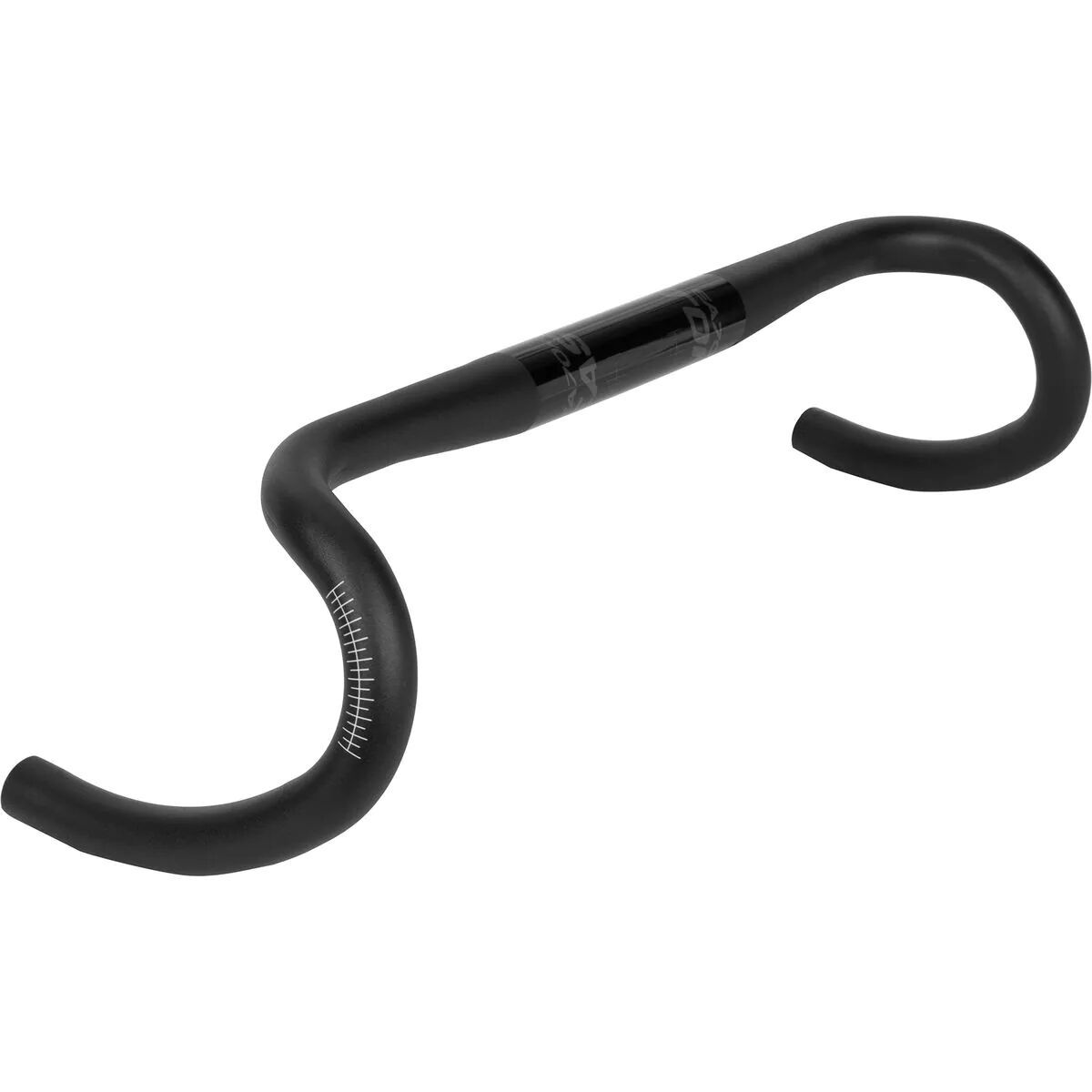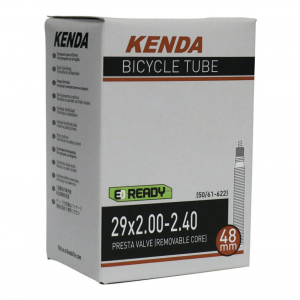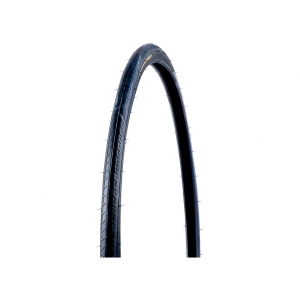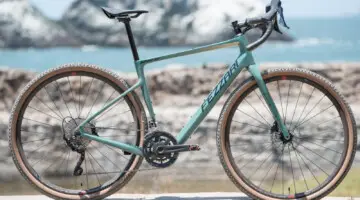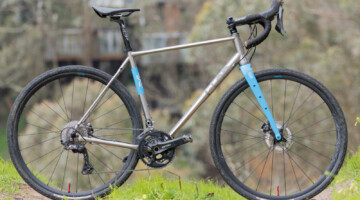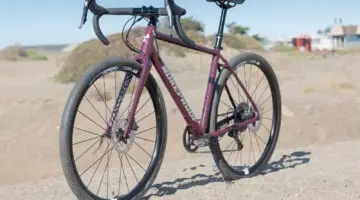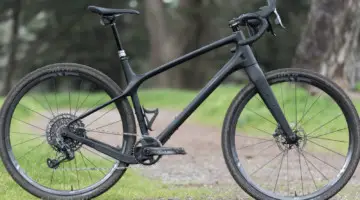Looking for a modern drop bar offroad bike that can handle today's high-volume gravel tires and even mountain bike tires, could go bikepacking and yet isn't out of place at a cyclocross race? Rocky Mountain's new carbon Solo series of gravel bikes is worth a look. Read our long-term review to see if this bike should make your wish list.
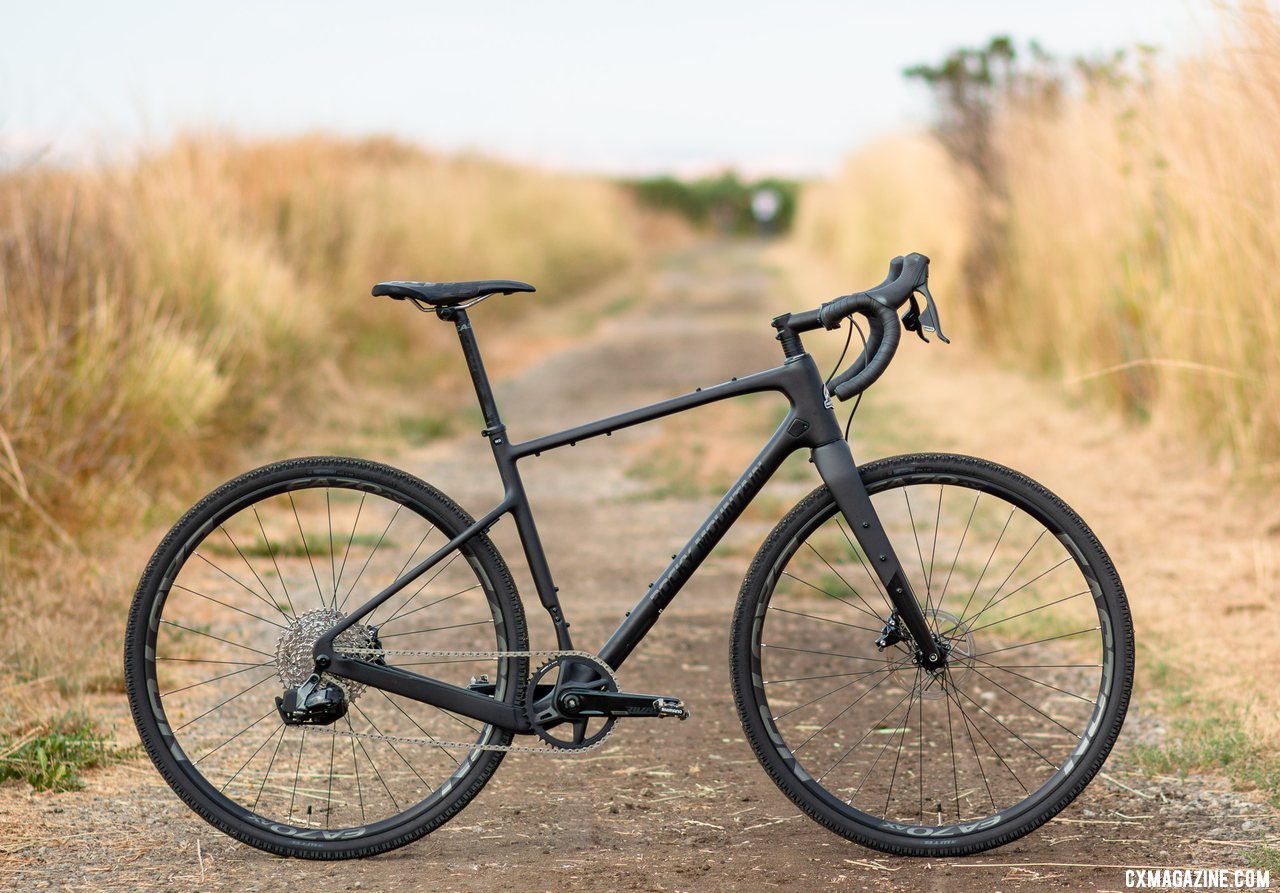
The versatile Rocky Mountain Solo C70 carbon gravel bike, pictured completely stock plus Shimano SPD pedals.. © Cyclocross Magazine
Rocky Mountain's Drop Bar Evolution
We’ve seen gravel bikes evolve quite a bit over the years. Early editions from more than a decade ago like the Raleigh Tamland targeted bigger tire clearance than many cyclocross bikes with longer and lower geometry, and added fittings for fenders and racks. Today, the gravel options are overwhelming. You can find aero gravel race bikes, bikepacking bikes, road bikes that can fit gravel tires, and cyclocross bikes like the Specialized Crux that have evolved to lean towards the gravel movement.
Rocky Mountain is a Canadian brand that many associate with mountain bikes, but it’s had drop-bar off-road offerings in its line-up for decades, including under mountain bike legends back in 2009, then dedicated carbon cyclocross bikes with cantilever brakes raced in UCI cyclocross races and later aluminum disc brake cyclocross rigs.
Seeing the growth in gravel, Rocky Mountain shifted more towards the do-it-all type bike with its highly-capable Rocky Mountain Solo 50 aluminum gravel bike that we reviewed and admire in 2019, and now the company has a carbon version that builds on the aluminum Solo’s versatility while saving weight, adding tire clearance, and offering the option for SRAM’s AXS eTAP electronic shifting.
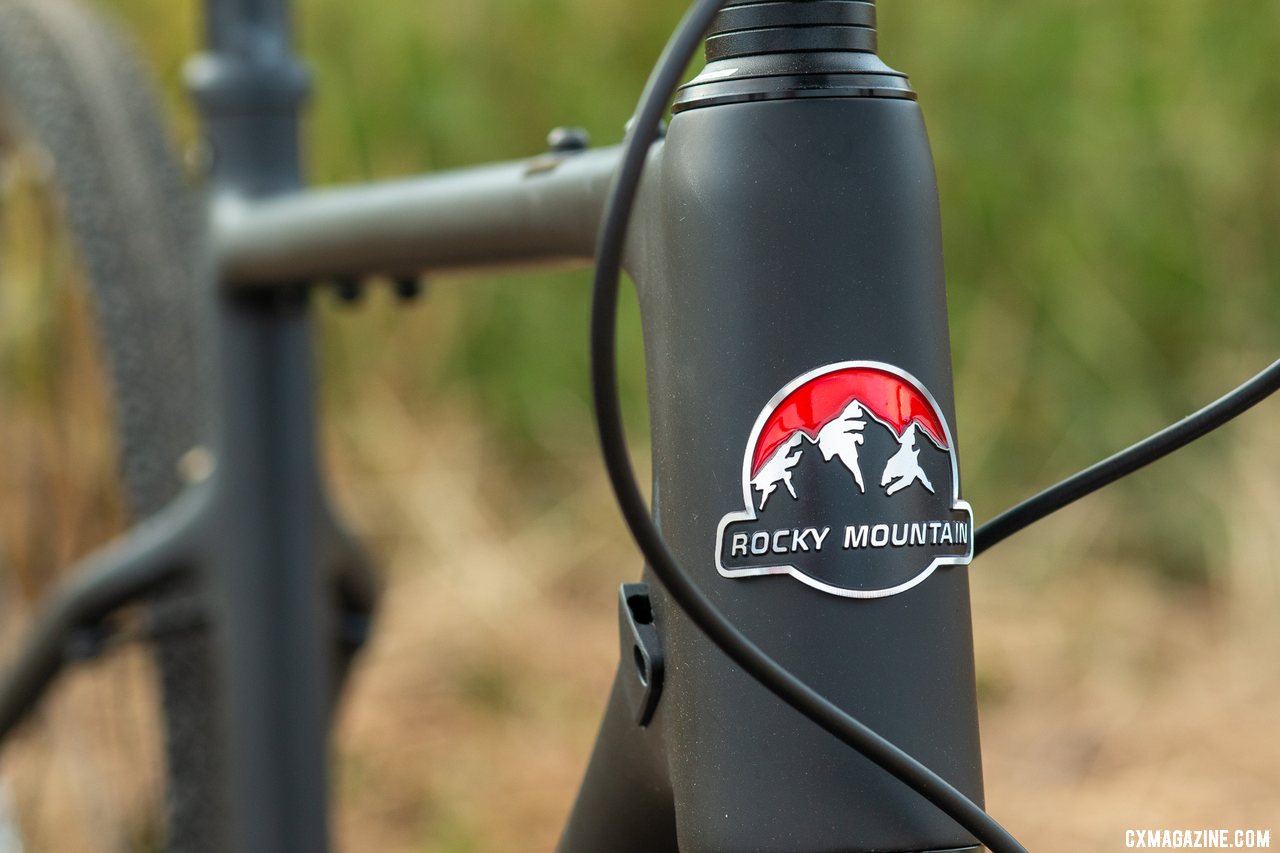
Want to run a front derailleur or dropper post? There's room for cabling. The versatile Rocky Mountain Solo C70 carbon gravel bike. © Cyclocross Magazine
The company describes the new carbon Solo as a bike “[d]esigned to make every ride an adventure, the Solo is the perfect tool to escape, log some miles, and make multi-day rides a blast.”
Rocky Mountain will let you buy online, but has a local dealer build up the bike and service your needs. That's the best of both worlds in this day of direct-to-customer retailing.
The Rocky Mountain Carbon Solo Gravel Frame
Rocky Mountain took an approach to its Solo frame design that will please riders who ride their gravel or cyclocross bike year ’round, riding trails, gravel roads, and perhaps toeing the line at some competitive gravel or cyclocross events. The company pulled out all the stops to maximize tire clearance while keeping the rear-center (and chainstays) short.
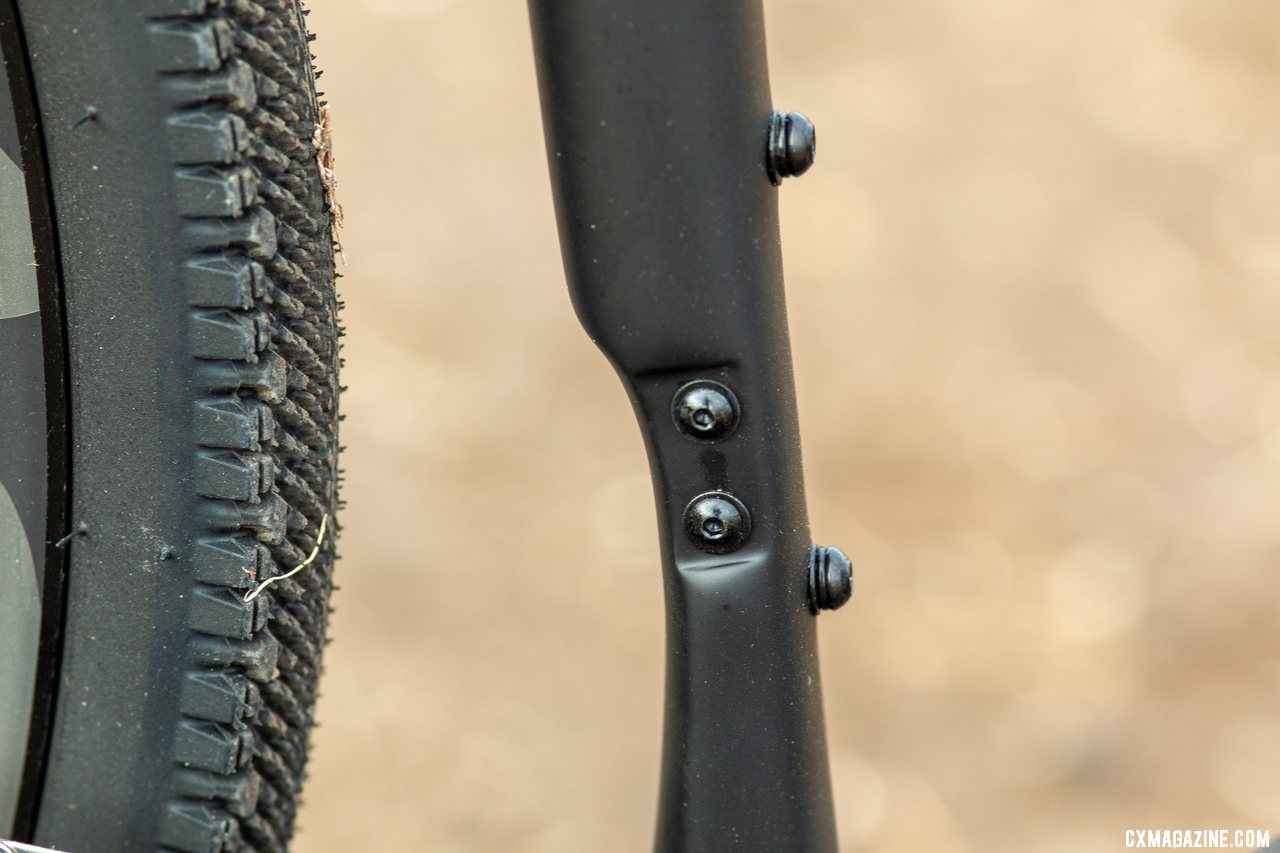
A sculpted seat tube maximizes tire clearance, while still offering a front derailleur mount. The versatile Rocky Mountain Solo C70 carbon gravel bike. © Cyclocross Magazine
A sculpted seat tube, dropped chainstays, a BB386 bottom bracket shell and SRAM Dub Wide bottom bracket and crankset create a bike that can easily fit over 2” mountain bike tires out back (with some caveats explained later). The downside for some riders with a narrower stance is a 5mm wider Q-factor. While we're a fan of threaded bottom bracket shells for easy maintenance and minimal creaking, the 86mm-wide shell with press-fit bearings is great for class-leading tire clearance, as we've seen on the award-winning Bailey Cyclocross and Sophie de Boer's unbranded CrossVegas-winning variant.
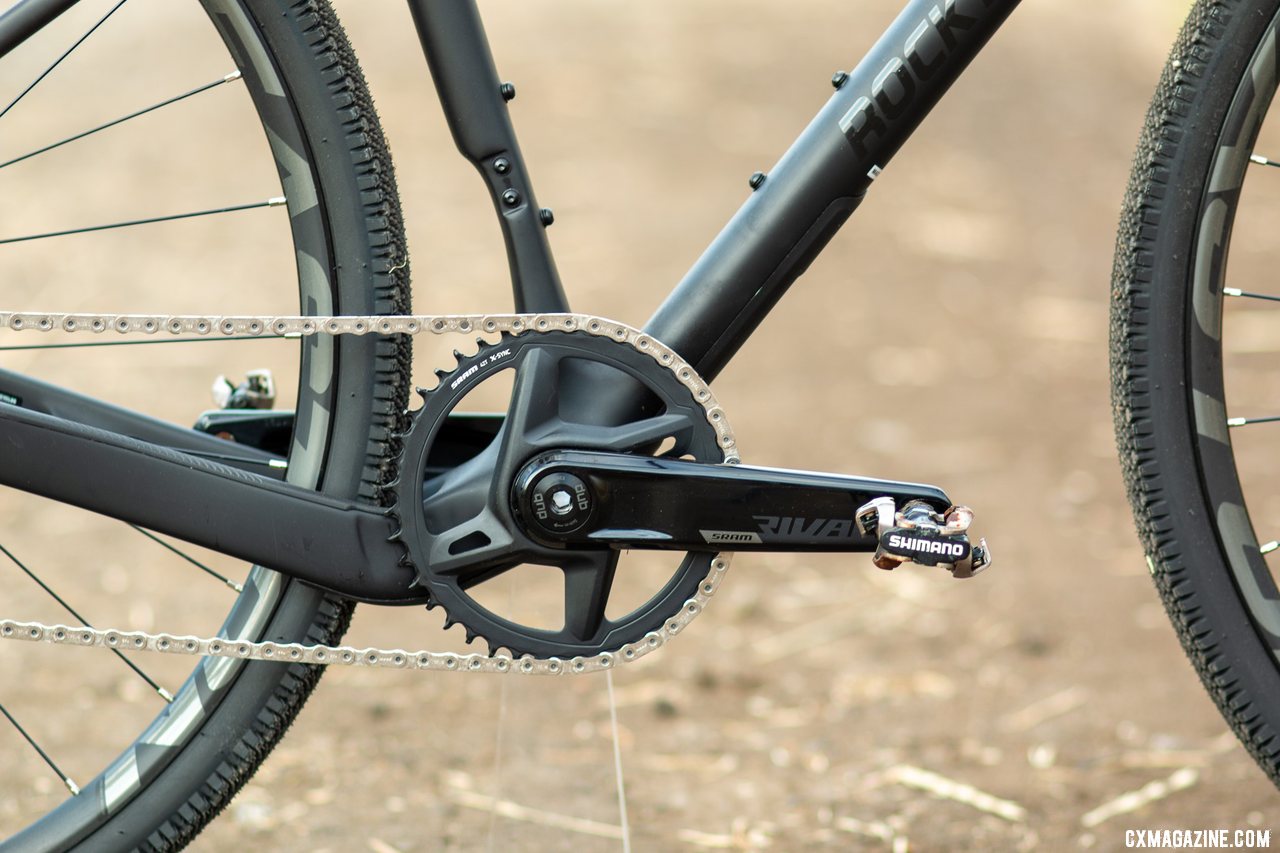
The SRAM Dub Wide crankset adds Q factor width and a wider chainline but supports more tire clearance. The versatile Rocky Mountain Solo C70 carbon gravel bike. © Cyclocross Magazine
Don’t think you’ll ever ride such wide tires? Consider that such generous tire clearance equals superb mud clearance, and also how more and more gravel racers are now opting for mountain bike tires on their gravel rigs.
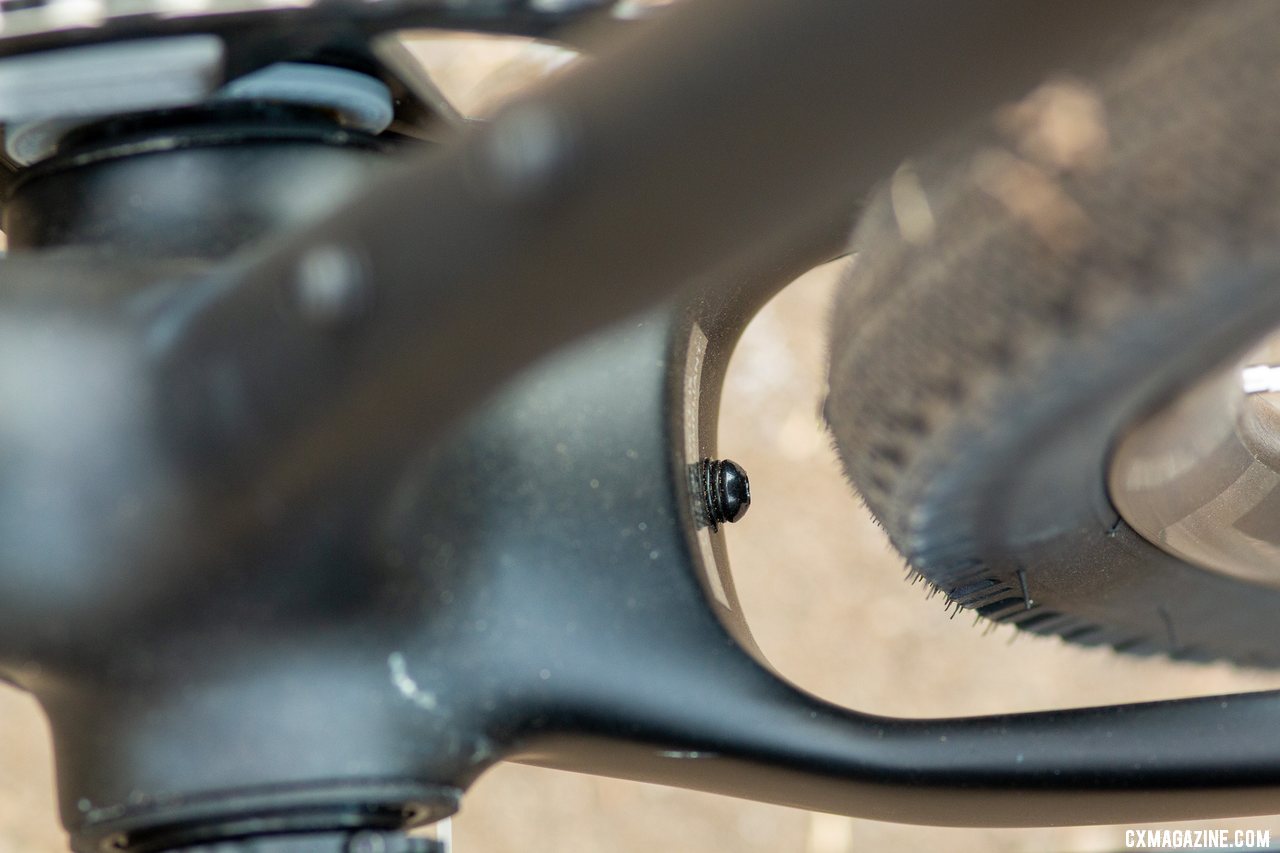
Gobs of tire clearance, and a bit of a shelf that can gather mud. The fender mount provides a wet weather protection option but gets in the way of a stretched Kenda 2.2" 29er tire. The versatile Rocky Mountain Solo C70 carbon gravel bike. © Cyclocross Magazine
Some traditionalists will argue about the hard line differentiating gravel and cyclocross bikes, but stare at the geometry chart of the Solo and you’ll find most numbers of the Solo aren’t too far off from modern cyclocross bike geometry. On our size Medium Solo, Rocky Mountain pairs a 42.5cm rear-center with a 74-degree seat angle and 71-degree head angle, 391.9mm reach and 586.2mm stack. The wheelbase, at 1045mm and bottom bracket at 75mm are a tad long and low, compared to “pure” cyclocross bikes, but as two-time (and current) Cyclocross National Champ Eric Brunner says, 95% of people wouldn’t be able to tell a difference between a cyclocross bike and gravel bike, and he spent last season racing Pivot's Vault gravel bike in gravel and cyclocross. We’ve long said that any bike will be perfect and also imperfect for different sections of any cyclocross course, and the point here is that this bike would not be out of place should you line up for a 45-minute effort between the tape.
While the frame has generous tire clearance, the fork offers even more space and fits a Kenda 2.4” Rush tire with room to spare.
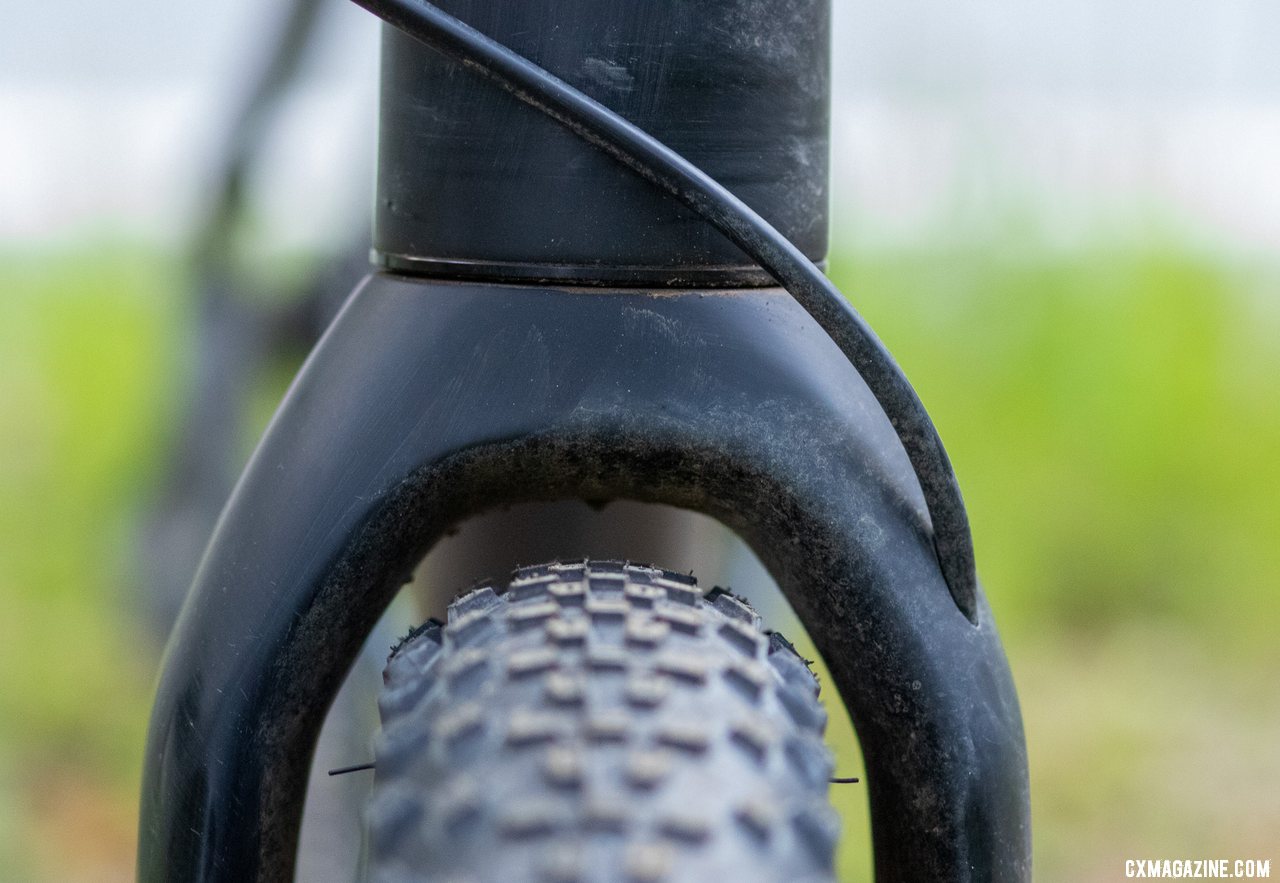
The versatile Rocky Mountain Solo C70 carbon gravel bike fits 2.2" tires out back (without the fender mount bolt) and 2.4" tires up front. © Cyclocross Magazine
The frame and fork have an ample offering of mounting barnacles, should you decide you need more carrying capacity than just two bottles. There are mounting bolts on each fork leg, the top of the top tube, and the underside of the top tube. You’ll feel a few of these bolts should you try shouldering the bike. Need a wet weather steed? There’s a removable fender mount between the seatstays, a bolt behind the bottom bracket, and two hidden bolts inside the seat stays to help you mount such rain protection.
While the bike comes with a standard hanger and Rival AXS rear derailleur, it is SRAM UDH compatible, making a swap to a Transmission drivetrain possible.
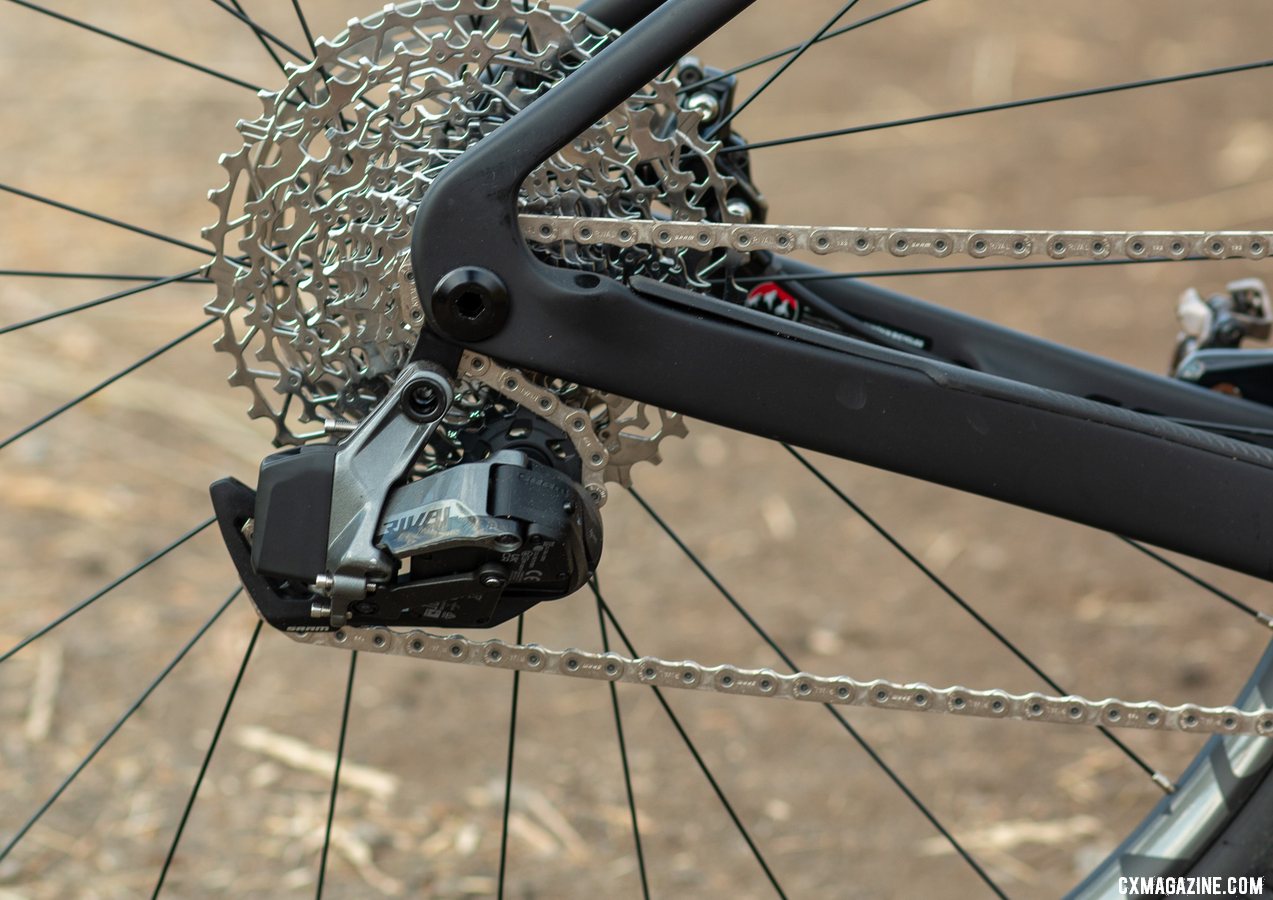
The SRAM Rival AXS rear derailleur brought reliable shifting but a few battery connection issues. The versatile Rocky Mountain Solo C70 carbon gravel bike. © Cyclocross Magazine
Our C70 model of the Solo line has a nice, stealth look with minimal branding. It's nice not to ride a rolling billboard, but it generated a lot of questions as to what I was riding. Most people were genuinely surprised when I told them it was a Rocky Mountain.
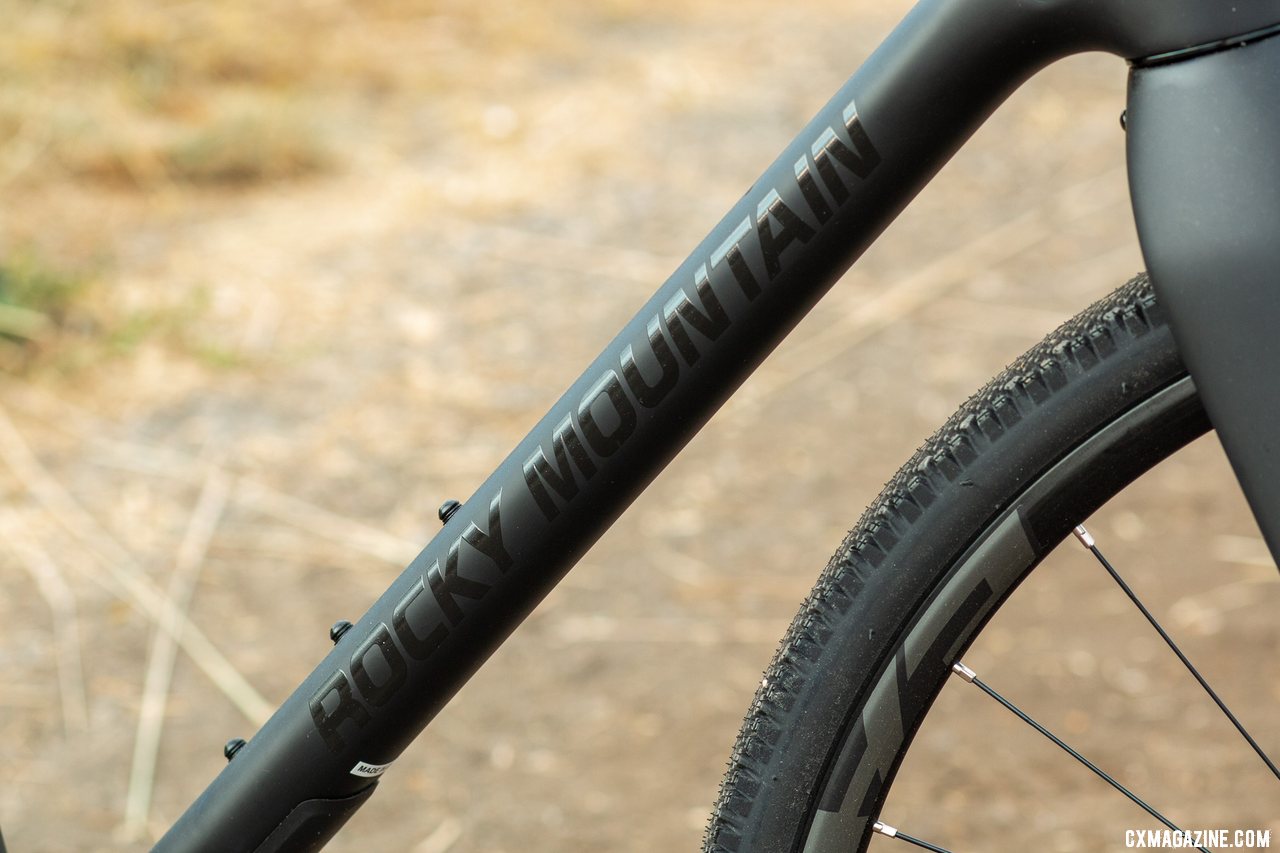
No rolling billboard here. The subtle branding of the Solo had plenty of people asking, "What bike is that?" The versatile Rocky Mountain Solo C70 carbon gravel bike. © Cyclocross Magazine
The Rocky Mountain C70 Gravel Build
Our $3999 (current price, on sale from $4999 MSRP) Rocky Mountain Solo C70 build came with a smart selection of components that reflect performance and value while leaning towards name-brand, reputable components.
SRAM Rival AXS eTAP drivetrain and brakes help you accelerate and stop, while Easton EA70 AX alloy wheels offer a relatively lightweight, moderate width (1760g, 24mm internal) wheelset to pair with gravel tires (with cap options should you want to move the wheels to another bike).
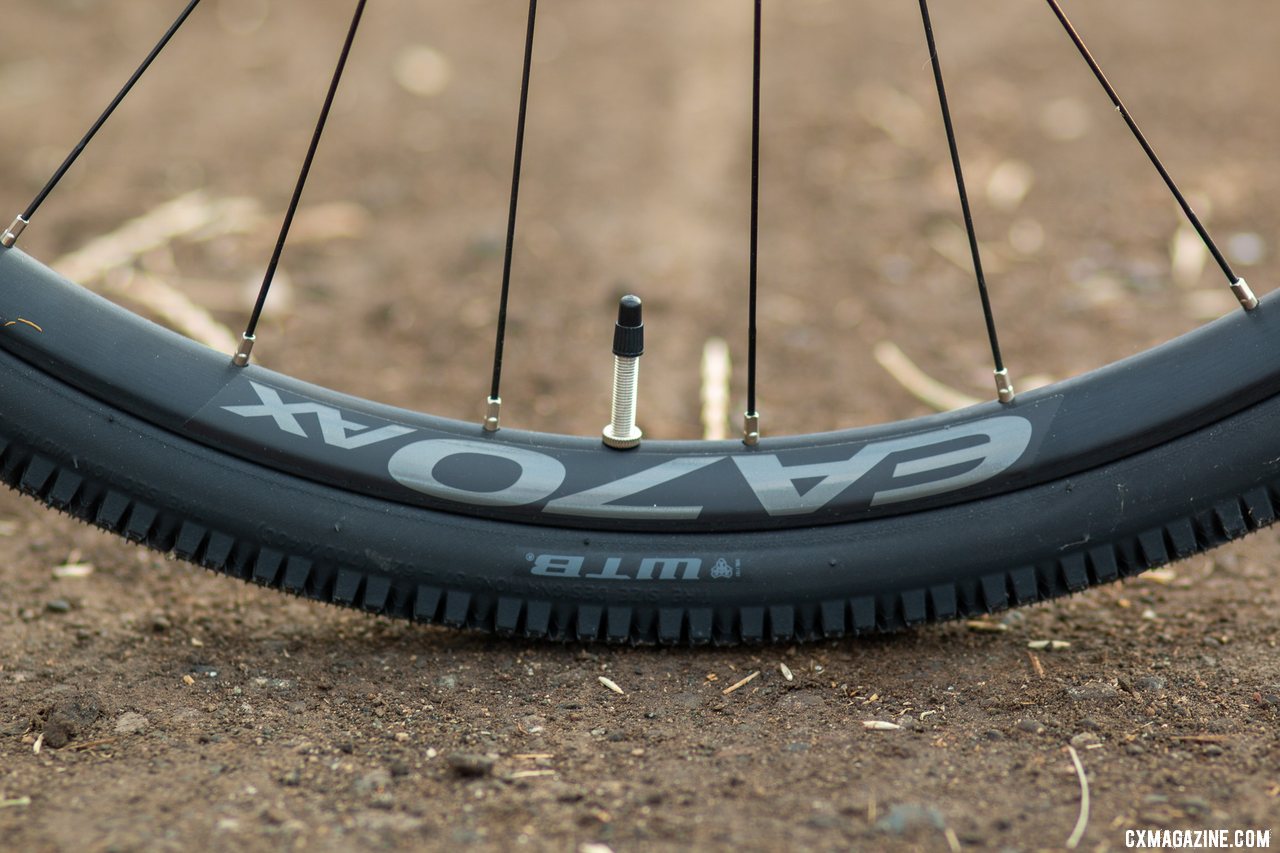
Easton EA70 AX alloy tubeless wheels gave reliable, burp-free riding. The versatile Rocky Mountain Solo C70 carbon gravel bike. © Cyclocross Magazine
WTB’s 40mm Venture tires wrap the EA70 AX wheels, but in the voluminous tire caverns of the frame and the fork, they look quite tiny.
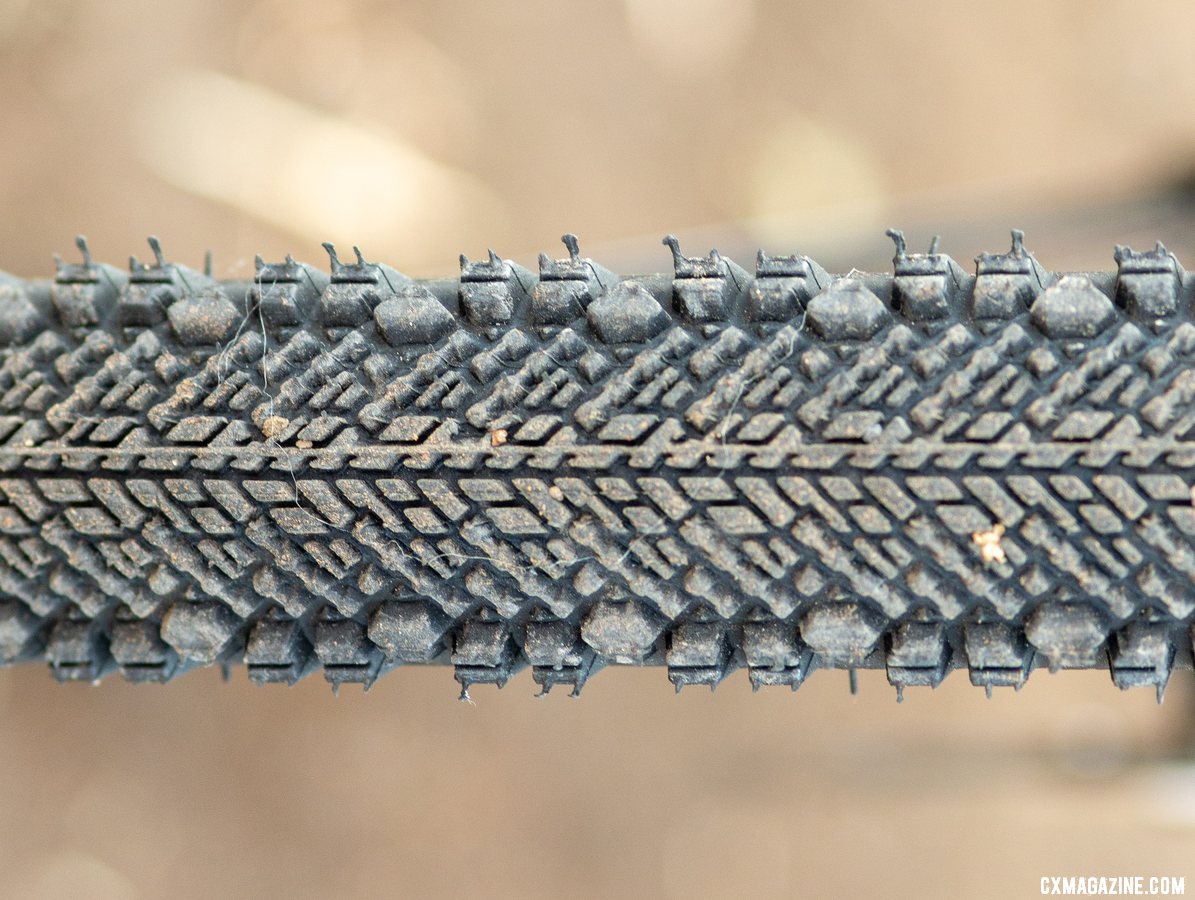
WTB's Venture TCS 40mm tires are capable but felt small given the frame's tire clearance and recent gravel tire trends to go bigger. The versatile Rocky Mountain Solo C70 carbon gravel bike. © Cyclocross Magazine
Easton also supplies the EA70 AX handlebar, a bar with a modest 16-degree flare, 80mm reach and 120mm drop. It’s paired with a 70mm Rocky Mountain’s house-brand stem and carbon EC70 seat post that sheds a few grams. Perched on the Easton post is a WTB Silverado saddle.
The entire build without pedals tipped our scales at 20.4 pounds for a size Medium. Shedding the WTB Venture tires and innertubes for a tubeless setup, whether it was the Challenge Getaway 45mm or Kenda Rush 2.2″ and 2.4″ tires and some sealant saved a few ounces. The bike with thru axles and without wheels or pedals tipped our scales 12.2 pounds, which suggests there's room for a pound of weight savings or more with lighter wheels.
Rocky Mountain Solo: The Ride
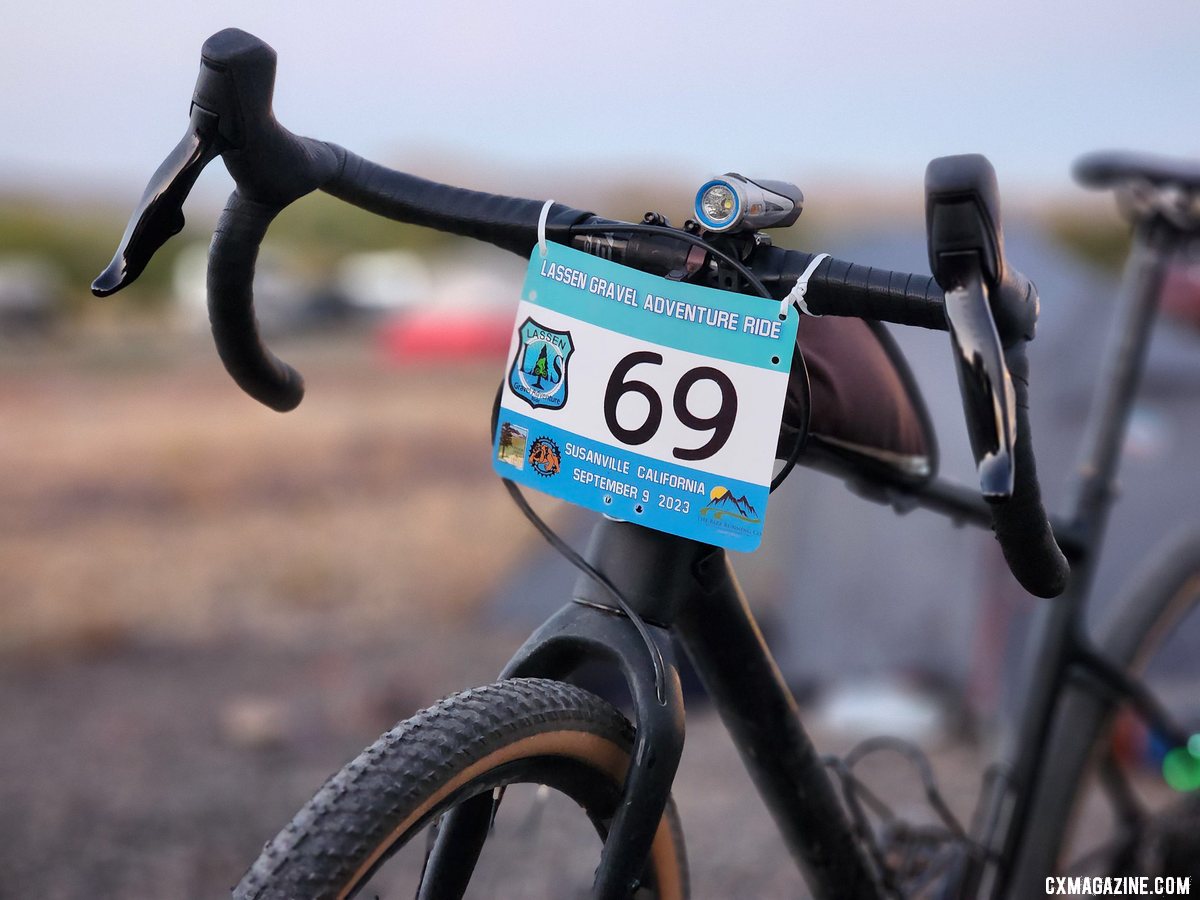
The versatile Rocky Mountain Solo C70 carbon gravel bike was the perfect bike for the Lassen Gravel Ride. © Cyclocross Magazine
In our long-term term review, I rode the Solo in a 94-mile gravel adventure ride in the Southern Cascades, pedaled and lifted it through a half dozen cyclocross races ranging from dry, dusty, jungle cross to full fledge mudders that would make Belgians proud, and grabbed it as my default rig for dozens of trail rides, NICA mountain bike team rides and race course recons.
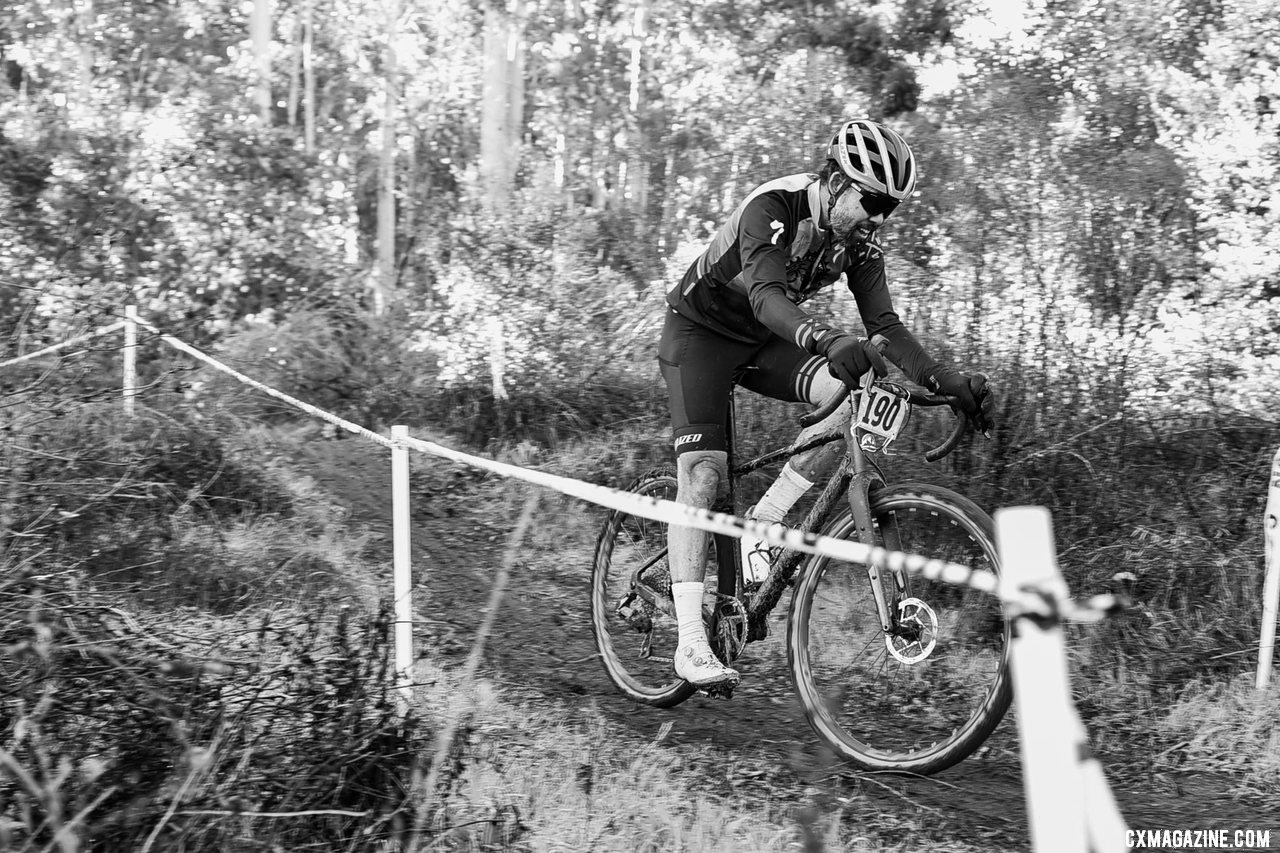
The versatile Rocky Mountain Solo C70 carbon gravel bike, with more aggressive rubber, was at home in a muddy cyclocross race. © Jorge Flores
Finally, dressed with the fattest rubber I could fit, it was my rig of choice for a Paris Roubaix-themed gravel ride down along the San Francisco Bay.

The versatile Rocky Mountain Solo C70 carbon gravel bike with big tires shined on a San Francisco Bay version of Paris Roubaix with mud cobbles. © Cyclocross Magazine
Looking at the above variety of rides, you might conclude that the Solo is quite versatile and capable of surviving such rides. That’s just how we test bikes, to see when they shine and falter, but with a few minor exceptions, the new carbon Solo might just be the most versatile bike we’ve ever tested. It absolutely shines on gravel rides, with a sufficiently long wheelbase and low bottom bracket that provides stable, confident riding on flat bumpy terrain and high-speed descents. Yet on technical climbs and trails, the short rear-center offers plenty of traction and makes for a nimble rig to navigate roots, rocks, and singletrack.
The SRAM XPLR gearing that pairs a 42t front chainring with a 10-44 cassette offered low enough gearing for climbing steep hills and attempting to ride cyclocross run-ups, and a tall enough gear to chase roadies. For bikepacking in hilly terrain, I’d definitely want a lower gear, but a mullet setup would require a different rear derailleur and cassette—not a cheap endeavor.
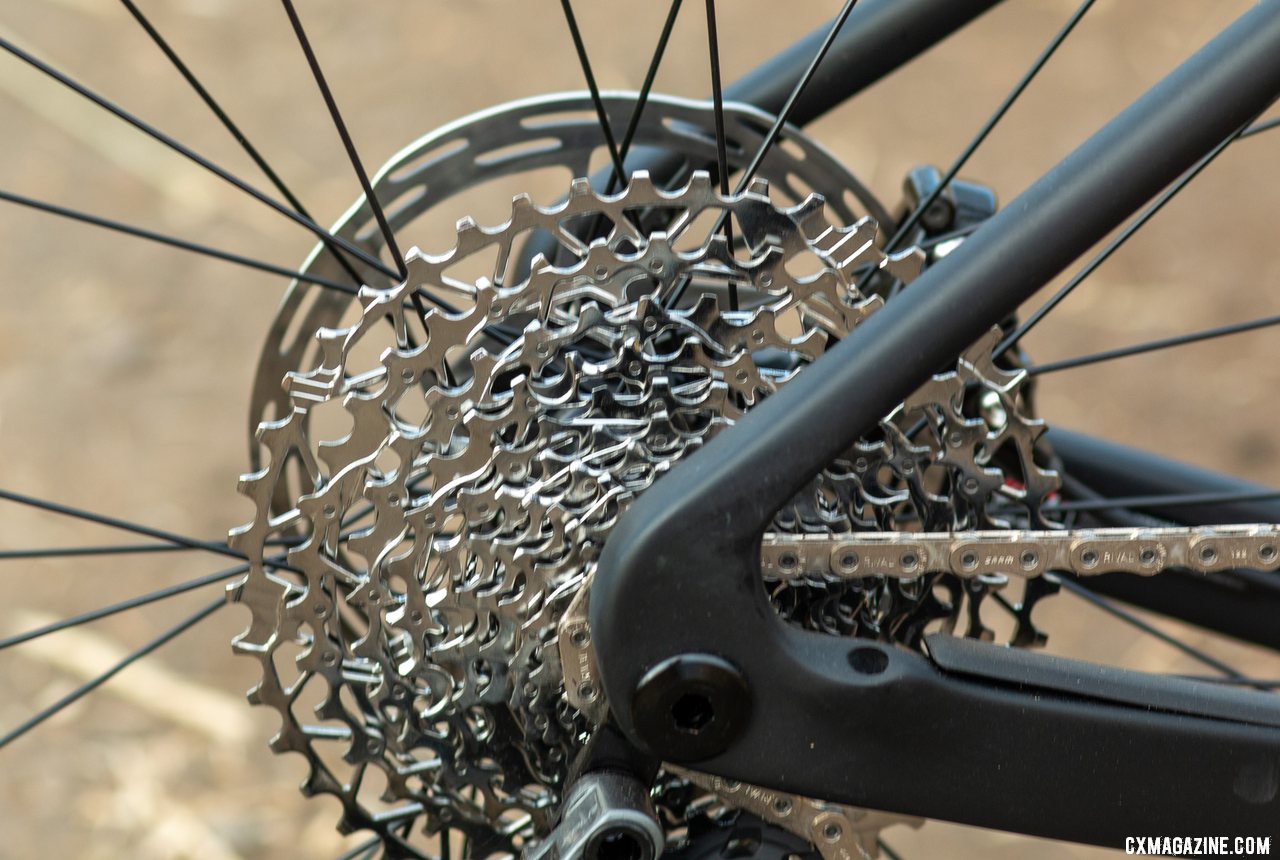
SRAM's 10-44 XPLR cassette and 42t chainring offered a low enough gear for hilly gravel rides and riding cyclocross run-ups. We'd want lower for bikepacking. The versatile Rocky Mountain Solo C70 carbon gravel bike. © Cyclocross Magazine
The only downside I experienced in technical terrain was the relatively low bottom bracket (75mm drop). With the 40mm stock tires, pedal strikes were more noticeable than on a typical cyclocross bike, but with bigger tires (44mm, 45mm, and 2.2″ later in our test) for most of our test period, we essentially pumped up the crank height to reduce the strikes. To be clear, I wouldn’t want the bottom bracket any higher and believe the lower center of gravity is worth the occasional pedal strike.
In my experience, the bike performs best off-road on all but the smoothest terrain once you shed the stock WTB tires for higher-volume rubber. The carbon frame is efficiently stiff, and as with most bikes, ride quality is greatly impacted by tire volume, quality and pressure. The Venture 40mm rubber is decent on hardpack dirt and wears well, but its limited volume and relatively boxy profile had me quickly opting for bigger, more supple casings and either faster-rolling treads for dry conditions or more knobs for loose or muddy conditions. If I have a bike that fits higher-volume tires, I always try to take advantage of it for my offroad riding, and did very few miles on the stock rubber.
Rocky Mountain does not market this bike for cyclocross, but many of our readers race cyclocross, ride gravel, and hit the trails, all on one bike, and sometimes, on one set of tires. The Solo was my bike of choice for most of the cyclocross season, despite its relatively long wheelbase, low bottom bracket and frame barnacles. Why? The Solo offers the tire clearance to run the fastest, high-volume tires for our bumpy cyclocross races. For most races, I rode the supple, low rolling resistance 45mm Challenge Getaway Handmade TLR clinchers, and when it got muddier I switched the Tufo Swampero 44mm knobbies. While this review isn’t the spot to convert doubters as to the benefit of high-volume tires, most of us non-UCI cyclocross racers can take note of gravel racers opting for mountain bike tires, and World Tour roadies riding 35mm tires and conclude that perhaps cyclocross tire widths are stuck in the dark ages.
And when the atmospheric rivers arrived with racing in the mud bowl called Rockville Cyclocross this last January, the Solo offered gobs of clearance around 38mm cyclocross tires to keep me rolling in conditions that had some stopping to clear bikes of mud and dreaming of pit bikes. For the final few weeks of the season, I did switch to a more traditional cyclocross bike, not because of the geometry, but only because it was several pounds lighter and the races had quite a bit of running. But the fact that it was my bike of choice, when I had other choices, is testimony to the Solo's versatility. The bike is not just designed to go straight but handles a technical course with aplomb.
The short rear-center but relatively long front-center and low bottom bracket shined more than hindered out on a variety of Norcal cyclocross courses, including on the mostly-paved Mare Island Pedalfest and the mountain bike-y courses in Livermore and Surf City. Maybe I didn’t have the tightest turning radius on a rare hairpin, but on high-speed turns, the low center of gravity was a bonus, and the high-volume rubber provided a compliant ride.
Is this the bike to beat marginal gains-obsessed Dylan Johnson’s drag numbers in wind tunnel tests? Probably not, but for the casual gravel racer, it’s a fine option, as it can fit the fastest, fattest tires you’ll want for the most rugged courses—no side-knob shaving is necessary. To finish this review, I bumped up my tire size to a Kenda Rush 2.4” up front and a 2.2” up rear, and on the Easton 24mm internal width rims, both fit in the frame and fork fine, measuring 2.1” out back and 2.25” up front.
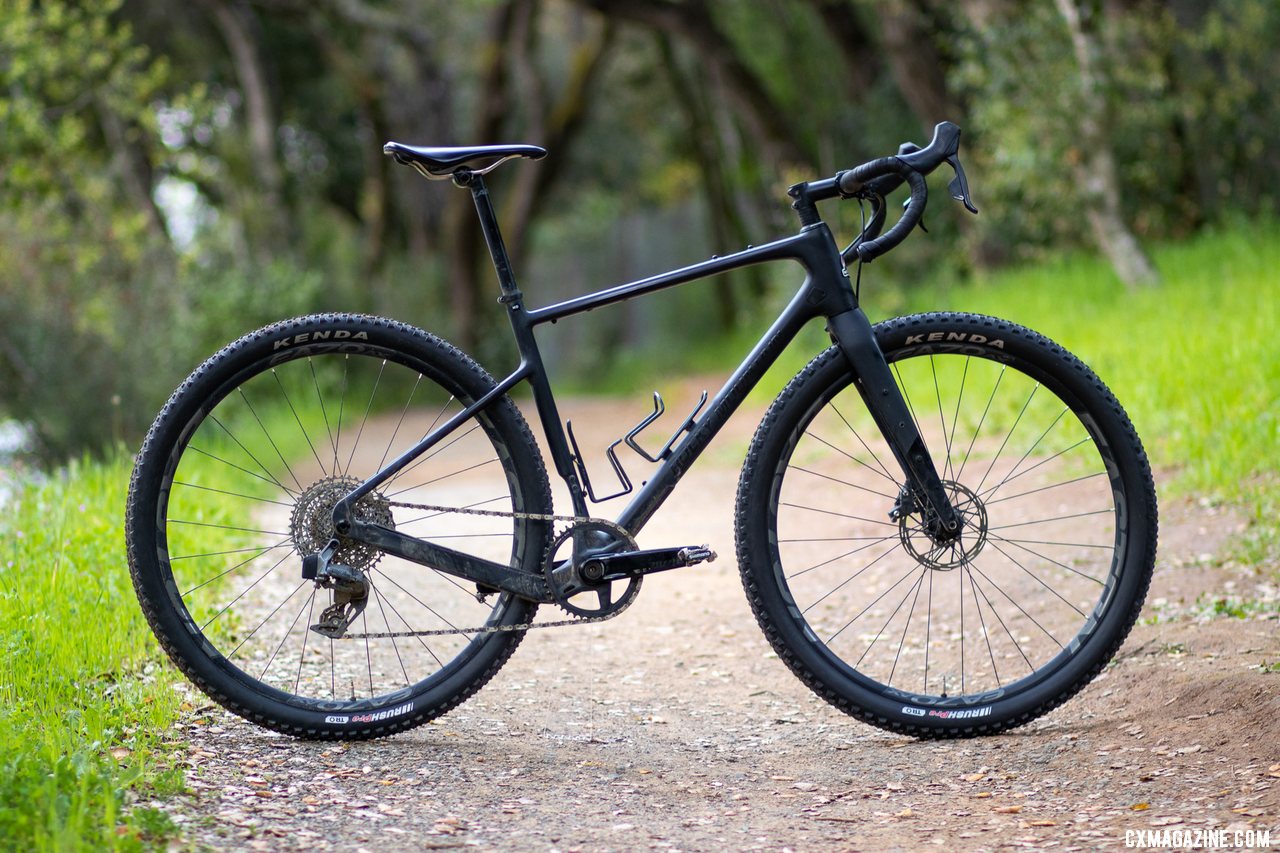
The versatile Rocky Mountain Solo C70 carbon gravel bike, monster cross style, with a few mods (non-stock Kenda Rush tires, 2.2" rear and 2.4" front, and Fabric Swoop saddle). © Cyclocross Magazine
The bigger tire up front created a bit of toe overlap with my size 46 shoes, but otherwise provided a dreamy ride of floating over the roughest terrain (think dried deep tire tracks in the mud). However, it wasn't always smooth sailing. Much to my surprise, after a fine debut ride with the big tires, four days later, the rear tire would not spin in the frame—it had stretched so much that it made contact with the fender mount bolt behind the bottom bracket. Removing the bolt solved the issue (of course, any open frame holes should be covered to prevent the elements from entering).
In all my rides, I discovered three quirks with the Solo worth mentioning, and one is outside of Rocky Mountain’s control. The first was that while the mud (and tire) clearance of the bike is impressive, there’s a small shelf behind the bottom bracket that tends to collect mud. Thankfully, it’s not a horizontal surface as seen on bikes like the Ibis Haka MX years ago, but it’s still a big surface for material to collect on. It hasn't been an issue in dry conditions or with 45mm or smaller gravel tires, but in thick mud or when pushing the limits of tire clearance, it certainly forced more bike washes.
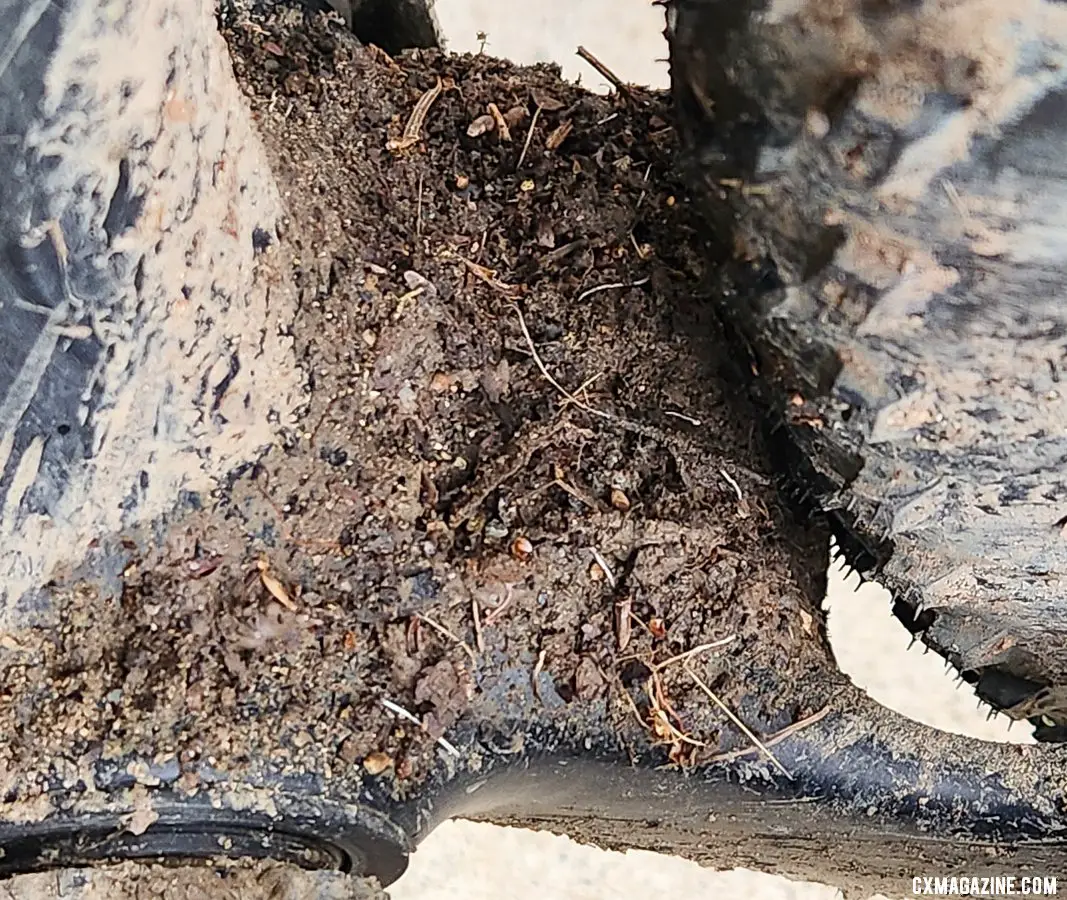
One minor gripe: The versatile Rocky Mountain Solo C70 carbon gravel bike has huge tire and mud clearance but a bit of a shelf that can collect mud and debris. © Cyclocross Magazine
Also, I'm probably one of the few who will notice this, but the frame bag mounts under the top tube can pierce skin should you find yourself portaging the bike through a stream or rock garden, or scaling a dirt wall in a junglecross run-up. Thankfully, if you plan to shoulder the bike, they’re easily removable. Lastly, the SRAM Rival AXS eTAP drivetrain worked well, as expected, but on three occasions the battery connection failed me. The first time, I was convinced that it was my user error and that I didn’t charge it soon enough. After a few miles of singlespeed climbing, on a whim, I disconnected the rear battery and reconnected it. Success! This happened two more times during my test period—something I haven’t experienced on other AXS eTAP bikes. These are just quirks, not flaws or dealbreakers for most riders, and thankfully the Rival battery connection issue did not surface during a race.
The new carbon Solo is part of the trend for lower standover, bigger tire clearance gravel bikes, and competes against bikes like the recently-updated Santa Cruz Stigmata, another cyclocross-turned-gravel machine ridden by stars like Keegan Swenson and Tobin Ortenblad. The Stigmata has similar geometry, but is slacker and longer, perhaps with less tire clearance and fewer frame barnacles. A similarly-equipped Stigmata is also $900 more. (Ortenblad opted for the current "gravel" Stigmata over his older "cyclocross" models at the local Surf City series, showing that even the pros will also pick tire volume over tighter geometry for non-UCI races.)
Rocky Mountain has a whopping eight different models of its Solo gravel line, from its affordable $1699 SRAM Apex 1x-equipped A30 model, to its flagship $5199 C90 model that comes with SRAM Force AXS eTAP and Rocky Mountain’s 24GR carbon rims and a DT Swiss rear hub. All the carbon models share the same frame, and the aluminum models share the same geometry but tend to weigh a pound more. The aluminum models are updated from the Solo 50 we reviewed in 2018. Surprisingly, the two more affordable carbon models, with Apex AXS eTAP and Rival mechanical, weigh slightly less than the higher-end C70 and C90 models, according to Rocky Mountain's website.
Rocky Mountain Solo C70: The Verdict
Overall, the Rocky Mountain Solo C70 shined so well during all my varied riding and racing that it became a must-have addition to what any normal person would say is a more-than-adequate bike quiver. So much so that I bought it from Rocky Mountain and am already considering parting with a few other bikes made obsolete from this versatile machine. The Solo performs admirably on dirt roads and trails, in gravel and cyclocross racing and has plenty of versatility for adventures and the occasional bikepacking trip, while making my hardtail irrelevant for anything I'd hit riding from home.
The Rocky Mountain Solo could earn its name—by becoming the solo machine in your one-bike quiver.
Rocky Mountain Solo C70 Gravel Bike Specs Highlights:
Frame: Rocky Mountain carbon, UDH compatible, 142mm rear dropout spacing, BB386 bottom bracket shell
Fork: Rocky Mountain carbon with 3-pack mounts and fender mounts, 12mm x 100mm thru axle
Drivetrain: SRAM Rival AXS XPLR with eTAP, 42t chainring, 10-44 rear cassette
Brakes: SRAM Rival
Cockpit: Rocky Mountain Stem with Easton EA70 AX handlebar and EC70 seatpost, WTB Silverado Race saddle
Wheels: Easton EA70 AX with WTB Venture TCS Light Fast 40mm tires
Weight: 20.4 pounds without pedals, 12.2 pounds without wheels or pedals
More info: bikes.com













